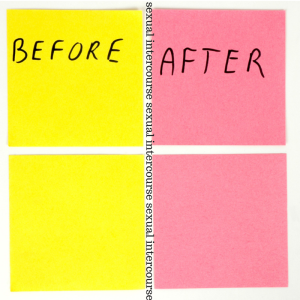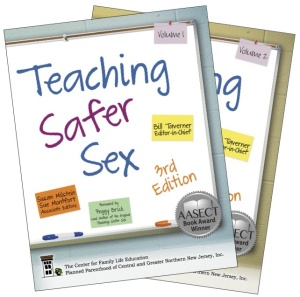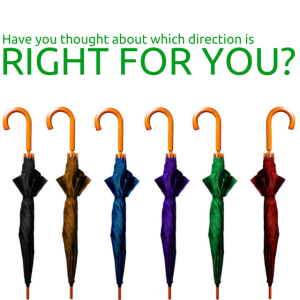 Today I’m wrapping up the conversations around the first section of Volume 2 of Teaching Safer Sex. This awareness of contraception education as needing to include a wider range of both topics (like pleasure!) and audiences (like people with special needs!) is fantastic, critical, life-changing!
Today I’m wrapping up the conversations around the first section of Volume 2 of Teaching Safer Sex. This awareness of contraception education as needing to include a wider range of both topics (like pleasure!) and audiences (like people with special needs!) is fantastic, critical, life-changing!
And this last topic of the section falls right into the trend of addressing a topic area that is too often overlooked.
Abstinence is (appropriately) ubiquitously addressed in sexual health classrooms. The decision to refrain from sexual activity is one that all people have at all times of their lives. (Although this lesson focuses on that shift for adolescents.) But what happens when someone decides to move from being abstinent to engaging in sexual activities? How does that decision happen? What are the factors involved? What does a couple need to do in order to facilitate that shift within their relational dynamic? Here’s a lesson to address all of those questions:
SOME DAY: Transitioning from Sexual Abstinence to Safer Sex
Objectives
By the end of this lesson, participants will be able to:
- Identify reasons why a person’s decision to abstain might change at some point in time.
- Describe ways a person could make the transition from abstaining to not abstaining.
- Identify ways to protect themselves from unplanned pregnancy and sexually transmitted infections if they decide to abstain no longer.
Rationale
Given the fact that almost everyone will engage in some form of sexual behavior, including intercourse, at some time during their lives, young people currently abstaining from sexual behaviors need the information and skills to make that transition safely.
Of particular concern are “virginity pledge” programs in which young people make a one-time public or written pledge to remain virgins until marriage. These programs leave young people without the necessary knowledge and skills to protect themselves from unplanned pregnancy and disease if they change their decisions. The reality is that most do change their decisions. Nearly 90% of pledgers have intercourse before they are married, and when they do, pledge breakers are much less likely to use condoms than non-pledgers. Further, with an average of eight to 10 years between first intercourse and marriage, there is a real need for young people to know protective information about pregnancy and sexually transmitted infections if they do decide to stop practicing sexual abstinence.
This lesson addresses the reality that most young people who practice sexual abstinence will stop doing so at some time in their lives, and helps prepare them for a healthy transition to intercourse whenever that might occur.
What is so great about this lesson plan are the shades-of-gray (errr…more than fifty of them…but not that kind…) that exist in the scenarios. From reaction conversations as a whole group to role-plays, this lesson plan includes a wide range of examples of teenagers making decisions about sex – including teens who have been sexually active in the past and those who have not – followed up by discussion questions like:
- What was the reason for the person changing his/her decision?
- What made the changed decision easier or harder?
- What else would you have liked to know about any of these teens?
- What do you think about an “abstinent” person also have a “back-up plan” for protection, like keeping condoms on hand?
This lesson offers a great, easy-to-implement discussion about abstinence in a way that is remarkably different, more textured, and more real than so many of the typical abstinence-only lesson plans.






